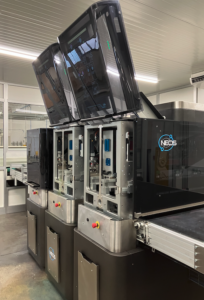How big is the European printing industry
A question often posed to me is: how big is the European printing industry. The answer depends very much on the markets you want to include. The obvious ones in the graphic arts industry include Graphic Arts print (which subsumes in the statistics commercial print and also more specialised printers like book, catalogue, forms or magazine printers). The only application specific type of printing company split out in the statistics is newspaper print. Prepress and postpress companies contribute to the graphic arts industry revenue, although strictly speaking they do not print. Important print producers that should be added, while not included in graphic arts statistics, are label and packaging printers – although commercial printers produce smaller volumes of label and packaging print as well as part of their services. Often overlooked in the statistics are photocopy services and in-house printing sites, the latter including data centre print.
There are some markets more difficult to size. Direct mail is produced as part of commercial print but also in advertising services – a portion that cannot be easily identified. Décor print (like wallpaper, furnishing, ceramics or textile) is missing as well, as the value of the print produced is hidden in the goods production. Also some small or niche packaging segments lack a good data basis.
In the view I recommend, those 10 segments contribute to the European printing industry revenue:
- Printing of newspapers
- Graphic Arts Print
- Pre-press and pre-media services
- Binding and related services
- Folding carton
- Flex Pack printing
- Corrugated printing
- Label printing
- Photocopy services
- In-house printing
Graphic Arts print (including publication and specialty print) contributes the biggest single chunk to the European printing revenue. Label and packaging printers combined add about the same amount (although some additional packaging output stems from commercial print, as mentioned above). The high substrate costs in label and packaging print drive up the revenues, while by surface area printed, commercial print would a much higher. Other segments are noticeably smaller but still add to the pie.

Considering all the segments or markets, the European printing industry had revenues of about €170 bn in 2022. The total European print revenues have been surprisingly stable in recent years, by balancing revenue declines in Western Europe with the revenue gains in Eastern Europe, stemming from demand increases and exports into Western Europe. The exception has been the pandemic year of 2020 with a decisive decline, followed by a recovery in 2021 and especially in 2022.
It should be kept in mind, however, that 2022 revenues are bolstered by a high inflation rate driven by energy, paper, and supplies prices. These have been passed on to the customers. The higher prices have an adverse affect on demand however, so we will not only see a demand decline but also a price erosion driving revenues lower in the coming years, especially in commercial print.
A breakout by country and timelines for graphic arts segments, also by size class, can be found in the 2024 European Print Industry Sizing report. If you need more details on how big is the European printing industry is and how to order the report, please continue here.
